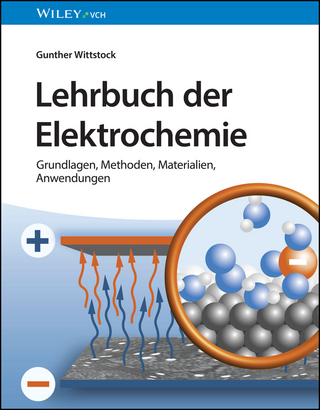
Laser Experiments for Chemistry and Physics
Oxford University Press (Verlag)
978-0-19-874298-2 (ISBN)
Lasers are employed throughout science and technology, in fundamental research, the remote sensing of atmospheric gases or pollutants, communications, medical diagnostics and therapies, and the manufacturing of microelectronic devices. Understanding the principles of their operation, which underlie all of these areas, is essential for a modern scientific education. This text introduces the characteristics and operation of lasers through laboratory experiments designed for the undergraduate curricula in Chemistry and Physics. Introductory chapters describe the properties of light, the history of laser invention, the atomic, molecular and optical principles behind how lasers work, and the kinds of lasers available today. Other chapters include the basic theory of spectroscopy and computational chemistry used to interpret laser experiments. Experiments range from simple in-class demonstrations to more elaborate configurations for advanced students. Each chapter has historical and theoretical background, as well as options suggested for variations on the prescribed experiments. The text will be useful for undergraduates students in advanced lab classes, for instructors designing these classes, or for graduate students beginning a career in laser science.
Robert N. Compton was born in Metropolis, IL. The Compton family moved to Oak Ridge, TN during WWII where his father worked on the Manhattan Project. He received degrees in Physics from Berea College (BA), the University of Florida (MS) and the University of Tennessee (PhD). He was a Senior Corporate Fellow at the Oak Ridge National Laboratory from 1965 to 1995 and has been a Professor of Physics and Chemistry at the University of Tennessee to the present date. He was a Visiting Professor at the University of Aarhus, University of Paris, and the FOM Institute in Amsterdam. In 2001, he was an Erskine Fellow at the University of Christchurch, New Zealand. His research interests include negative ions, laser spectroscopy, and molecular chirality. Michael A. Duncan was born in Greenville, SC, where he attended Furman University (B.S. 1976). In graduate school at Rice University he worked with Prof. Richard E. Smalley (Ph.D. 1982). He was a National Research Council postdoctoral fellow at the Joint Institute for Laboratory Astrophysics (JILA) in Boulder, CO with Prof. Stephen Leone. He joined the University of Georgia faculty in 1983. He uses laser vaporization, molecular beams, mass spectrometry and laser spectroscopy to study metal clusters, ion-molecule complexes and carbocations. Duncan is Fellow of the American Physical Society (2001) and the American Association for the Advancement of Science (2004), and Senior Editor of the Journal of Physical Chemistry since 1998. He is recipient (2007) of an Alexander von Humboldt Fellowship at the Fritz Haber Institute in Berlin and won the Experimental Physical Chemistry Award (2011) given by the American Chemical Society.
1. Elementary Properties of light ; 2. Basic Optics ; 3. General Characteristics of Lasers ; 4. Laboratory Lasers ; 5. Nonlinear Optics ; 6. Laser Safety ; 7. The Speed of Light ; 8. The Speed of Sound in Gases, Liquids and Solids ; 9. Thermal Lens Calorimetry ; 10. Laser Refractometry ; 11. Laser Induced Breakdown Spectroscopy ; 12. Laser Desorption Time-of-Flight Mass Spectrometry ; 13. Multiphoton Ionization Mass Spectrometry of Metal Carbonyls ; 14. Optical Spectroscopy ; 15. Quantum Chemistry Calculations ; 16. Multiphoton Ionization and Third Harmonic Generation in Alkali Atoms ; 17. Electronic Absorption Spectroscopy of Molecular Iodine ; 18. Electronic Spectroscopy of Iodine using REMPI ; 19. Raman Spectroscopy under Liquid Nitrogen ; 20. Optical Rotary Dispersion of a Chiral Liquid (?-pinene) ; 21. Faraday Rotation ; 22. Fermi Resonance in CO2 ; 23. Photoacoustic Spectroscopy of Methane ; 24. Optogalvanic Spectroscopy ; 25. Diode Laser Atomic Spectroscopy ; 26. Vacuum Ultraviolet Spectroscopy using THG in Rare Gases ; 27. Raman Shifting and Stimulated Electronic Raman Scattering (SERS) ; 28. Fluorescence Lifetime of Iodine Vapor ; 29. Raman Spectroscopy Applied to Molecular Conformational Analysis ; 30. Diffraction of Light from Blood Cells ; 31. Inversion of Sucrose by Acid Catalyzed Hydrolysis ; Appendix I. Recommended Components and Equipment ; Appendix II. Fast Signal Measurements
| Erscheint lt. Verlag | 26.11.2015 |
|---|---|
| Verlagsort | Oxford |
| Sprache | englisch |
| Maße | 191 x 246 mm |
| Gewicht | 870 g |
| Themenwelt | Naturwissenschaften ► Chemie ► Physikalische Chemie |
| Naturwissenschaften ► Physik / Astronomie ► Atom- / Kern- / Molekularphysik | |
| Naturwissenschaften ► Physik / Astronomie ► Optik | |
| Technik | |
| ISBN-10 | 0-19-874298-3 / 0198742983 |
| ISBN-13 | 978-0-19-874298-2 / 9780198742982 |
| Zustand | Neuware |
| Haben Sie eine Frage zum Produkt? |
aus dem Bereich


